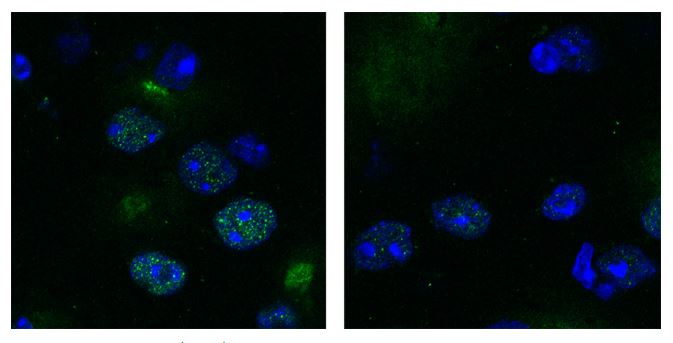When drug developers assemble their Most Wanted lists, they may overlook the phosphatases, signaling enzymes that are notoriously hard to pick out of a lineup. Phosphatases, however, may soon find themselves the subject of intense investigation, now that scientists from the Medical Research Council (MRC) have created a platform for target-based discovery of phosphatase inhibitors.
Unlike kinases, which come from a different family of signaling enzymes, phosphatases often lack distinguishing characteristics. Consequently, if a drug candidate attempts to apprehend a phosphatase of interest, it may end up seizing many different phosphatases indiscriminately, with dire results. More than 200 types of phosphatases participate in cellular processes, so drug candidates that inhibit multiple phosphatases may cause serious side effects or even kill cells.
So, should phosphatases keep getting away with being “undruggable”? Not according to the MRC’s Anne Bertolotti, Ph.D., a molecular biologist committed to fighting neurodegenerative diseases that are characterized by the accumulation of misfolded proteins in the brain. Such diseases include Alzheimer’s, Parkinson’s, and Huntington’s.
Dr. Bertolotti led a team of MRC researchers in the development of a drug-screening system that uses surface plasmon resonance to identify selective serine/threonine phosphatase inhibitors. The MRC team used this system to find a phosphatase inhibitor capable of targeting a specific phosphatase, one implicated in the accumulation of Huntington’s disease-associated proteins in mice.
Details of this work appeared July 26 in the journal Cell, in an article titled, “Target-Based Discovery of an Inhibitor of the Regulatory Phosphatase PPP1R15B.” This article describes how the MRC team screened for molecules that could engage a regulatory subunit of protein phosphatase 1, PPP1R15B (R15B), a negative regulator of proteostasis. Ultimately, the screen yielded Raphin1, a selective inhibitor of R15B.
“In cells, Raphin1 caused a rapid and transient accumulation of its phosphorylated substrate, resulting in a transient attenuation of protein synthesis,” the article’s authors wrote. “In vitro, Raphin1 inhibits the recombinant R15B-PP1c holoenzyme, but not the closely related R15A-PP1c, by interfering with substrate recruitment.”
When Dr. Bertolotti and colleagues tested Raphin1 in a mouse model of Huntington's disease, they found it could cross into the brain where it reduced the accumulation of the disease-associated misfolded proteins in neurons. The scientists emphasize that this is early-stage research and more work is needed to test if the drug will be safe or effective in humans.
“Since Huntington's disease runs in families and can be diagnosed genetically, early diagnosis could provide what we hope is a window of opportunity to target the disease before symptoms appear,” explains Dr. Bertolotti. “Our unique approach manipulates cells to slow down normal functions and give them a chance to clear up the misfolded proteins that are characteristic of Huntington's. However, it will take some years before we know if this approach works in humans and is safe.”
The approach referred to by Dr. Bertolotti builds on previous work by the MRC team in which it created functional synthetic versions of phosphatase proteins. These synthetic phosphatases are tethered to chips so they can be screened to find a molecule that binds to one type of phosphatase, but to none of the other types. The successful molecule is then tested in cells grown in a dish to check it is safe before beginning testing in mice.
“For decades, with no way to selectively target phosphatases, research into them has lagged behind kinases and they've been described as undruggable,” notes Dr. Bertolotti. “Our new system is only a first step, but we hope cracking this problem will stimulate phosphatase research and drug development.
“Targeting phosphatases—instead of kinases—is like targeting the brake, rather than the accelerator, on signals in cells. By inhibiting a phosphatase, we prolong a signaling event that has already been turned on, which may offer safer ways to specifically alter signaling in cells and help to create new drugs with fewer side effects.”






